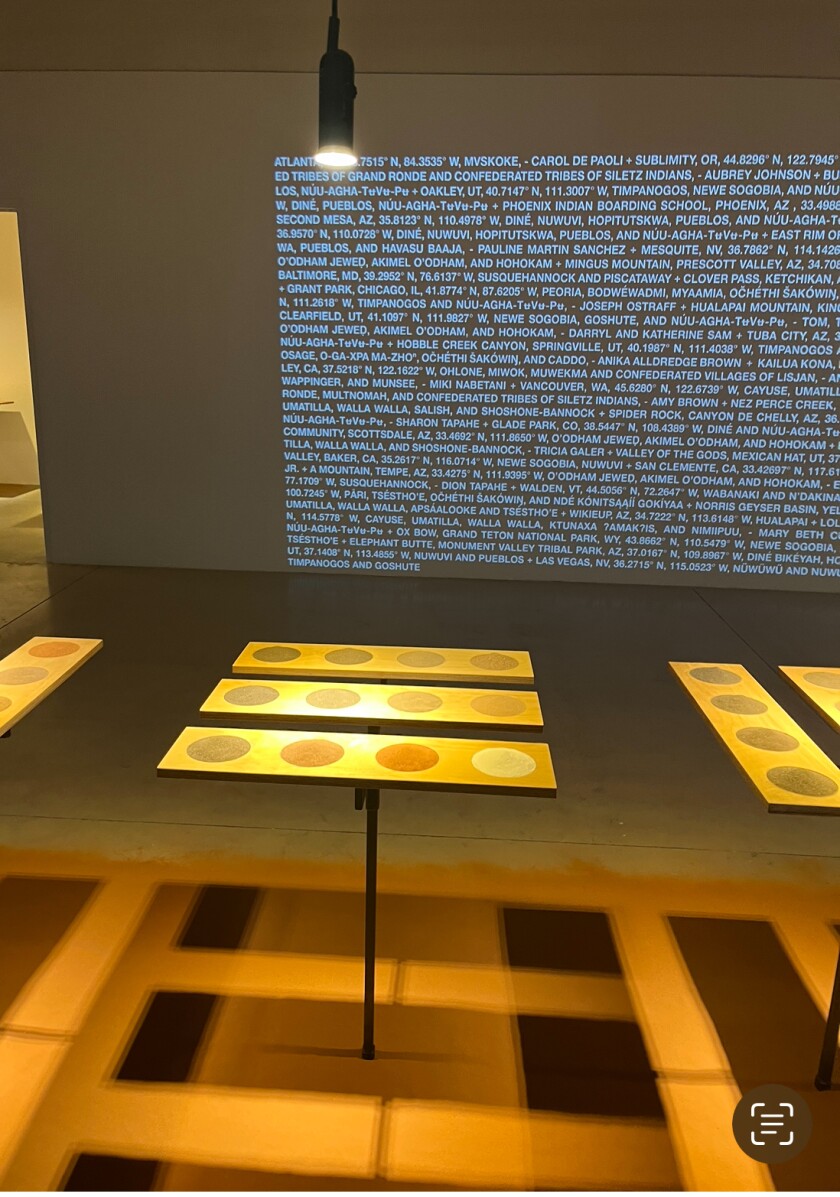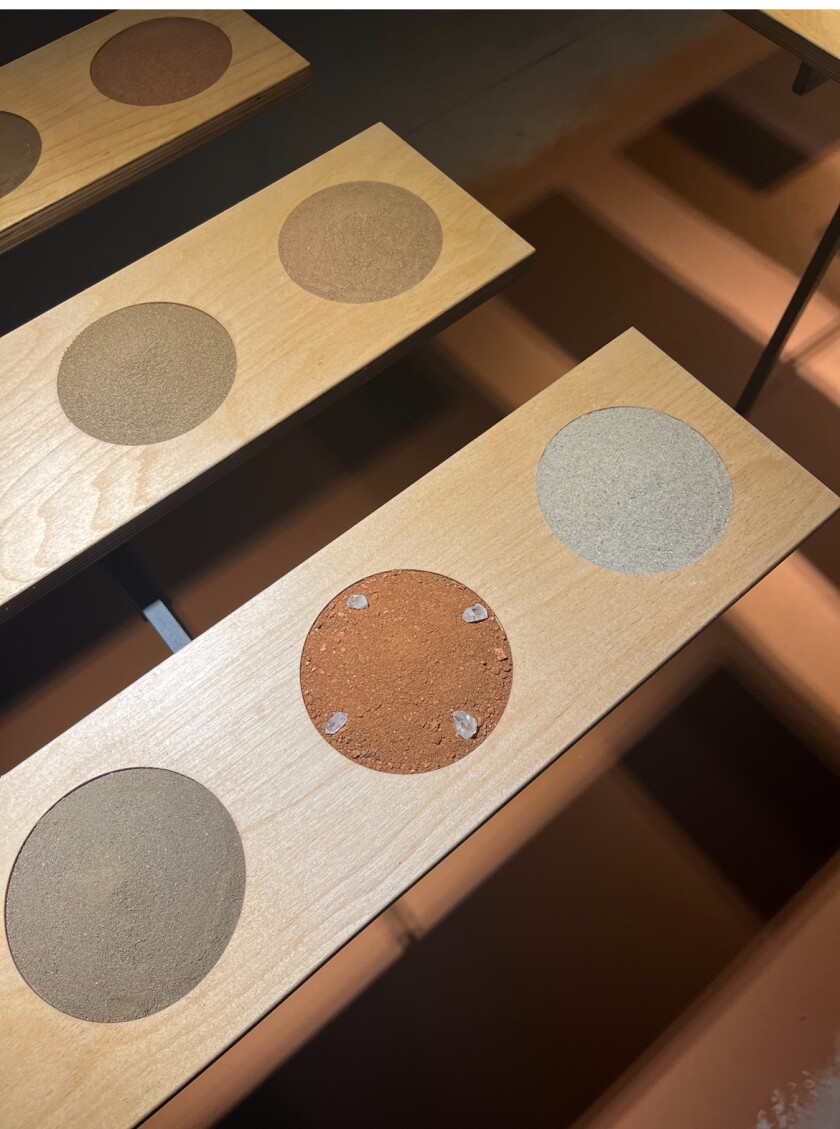Eugene Tapahe Explores Relationships to Land and Self in Weight Room Master’s Thesis Art Exhibition

Dim lighting and rain recordings greeted viewers as they entered “Hózhó + Art Heals,” an exhibition inviting those who entered to find peace as they explored issues of homeland, Mother Earth and how art can soothe and fortify. Artist Eugene Tapahe created three warm but challenging pieces—“Kéyah,” “Kéyah Yił” and “Nahasdzáán”— that invited viewers to explore their relationship to the land and ruminate on how to create hózho, a Diné concept that focuses on harmonious connections of balance and beauty. The titles are Diné, or Navajo, words that translate to “Homeland,” “With Homeland” and “Mother Earth,” respectively.
“Kéyah,” in some ways, best captured the sense of connection in the concept of hózho, balance and beauty. Tapahe created an Instagram campaign asking people to send two cups of soil from their neighborhoods in the United States and Canada. His followers reposted the invitation, and he received 96 soil samples from across North America. He provided participants with a website to look up which tribes originally lived on the land where they gathered the soil and asked each participant to write a short paragraph about why they wanted to participate in the project. Tapahe said many of the samples came from cities, but he and his family “washed the city off of it” to reveal the soil’s naturally beautiful color. He worked with Wadsworth Design to create the tables and pedestals holding the soil. The tables sat on bases that resembled flower stems and incorporated the cross-hatch design used in building with adobe bricks.

He said non-native participants often asked if they were allowed to participate and he responded that the project was meant for them to do so. “This whole project is about bringing attention to the fact that we’re all living on someone else’s land,” he said. Despite the sense of one’s homeland being challenged, he said another purpose was reconnecting to the land. “As children, we played in the dirt, but as adults, as we get into the modern world, that’s not important to us anymore,” he said.
“Kéyah” is the only participatory artwork in the show, but Tapahe said all the pieces were meant to invite viewers’ meditation. “Nahasdzáán” featured four pieces representing the four directions (North, East, South and West) and had audio recordings of rain give way to a recording of Tapahe’s wife, Sharon Tapahe reciting a Diné prayer as viewers took in the art. Both installations were created specifically for the show the day before opening and irrevocably disassembled afterward.
The video installation, “Kéyah Yił,” was recorded by drones in Arizona’s Monument Valley. This firmly captured installation was an exploration of Tapahe’s ancestral connection to the land. Those familiar with Diné symbolism could find multiple layers of meaning in all the pieces with East-facing portals, yellow corn offerings and sacred colors.

Tapahe came to the Art MFA program as a professional photographer. His photographs, like the installations, celebrate and bring awareness to Diné culture. Some were featured in Modern West, a Salt Lake gallery, as recently as last fall. “I already have an art career in photography, so when I came to the MFA program, it was more about different ways of expressing and creating art,” Tapahe said.
He said he was happy to provide an opportunity for people to reconnect to the land with his show, and that the participants’ statements accompanying the soil were “heartfelt.” He hopes he will continue to contribute to heartfelt awareness through installation after graduating in April. The Instagram campaign for soil samples is still going. Though the original deadline was in November of last year, Tapahe is still accepting samples. “Hopefully I can keep going and pursuing this because it is pretty unique in the sense of what I’m doing, and how I’m doing it,” he said. As far as where he wants to go from here, he said the soil installation was made to find new gallery spaces and be recreated, but what he wants most is to continue to create common ground and to “bring awareness to people and nature issues.”